CreateIncidentResponse Fields
We will utilise the Field & Field Map records to configure the Message Scripts for the CreateIncidentResponse Message.
Copy Field Maps
The Field Map we shall use for our CreateIncidentResponse Field record is:
Source Reference
To copy the Source Reference Field Map, navigate to the 'Field Maps' icon.
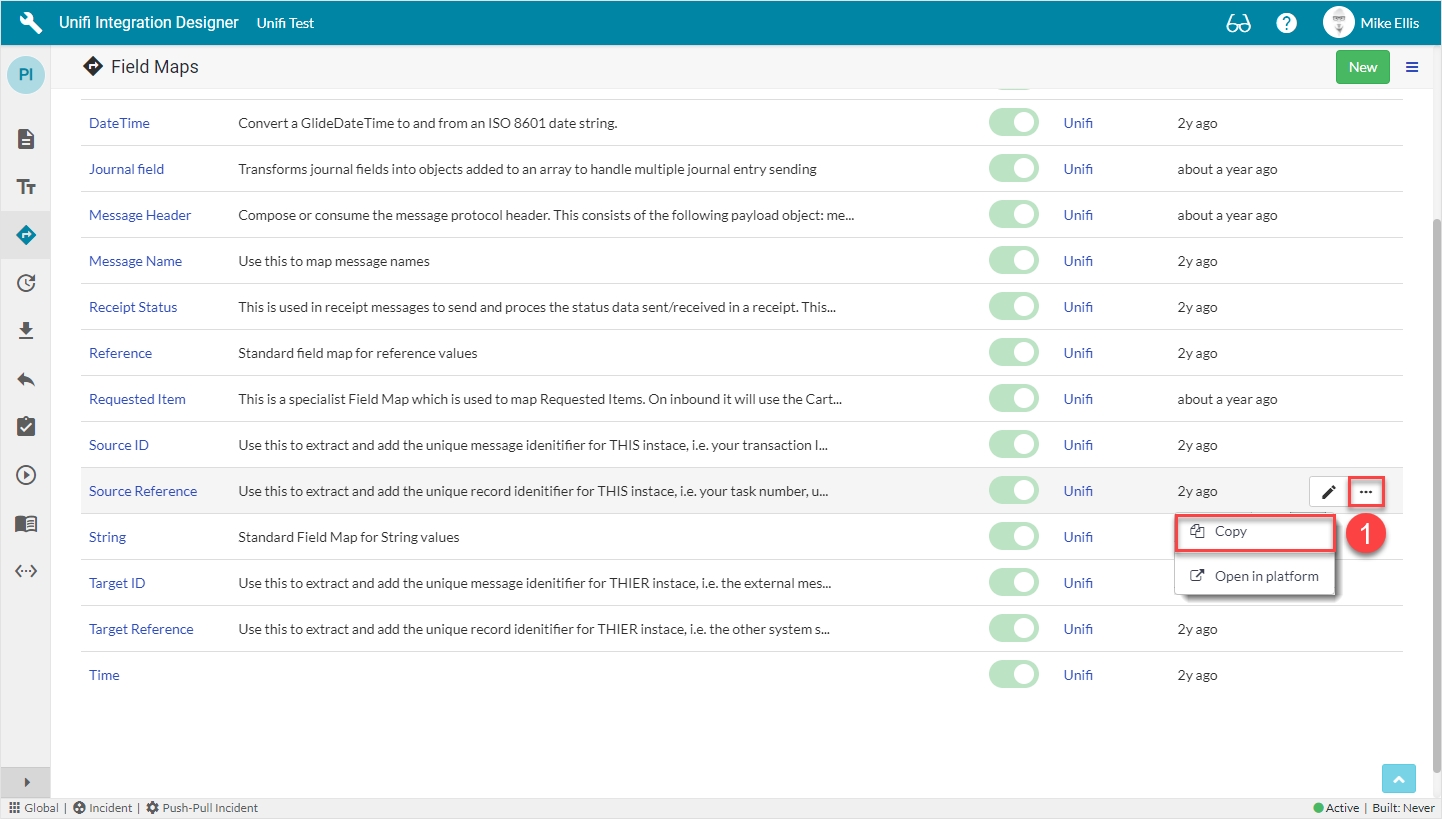
Click on the ellipsis to the right of the Source Reference Field Map & click Copy.
Copy Field Map Modal
The fields to edit for the Copy Field Map modal are as follows:
Name*
The name of your field map. (If left unedited, it will append the word 'Copy' to the existing name.)
<Your Name>
*Name: We have chosen to prefix the existing Field Map Name with the initials of our Integration (you are free to choose any appropriate means of identifying/differentiating your copy).
Your Copy Field Map modal should look like this:
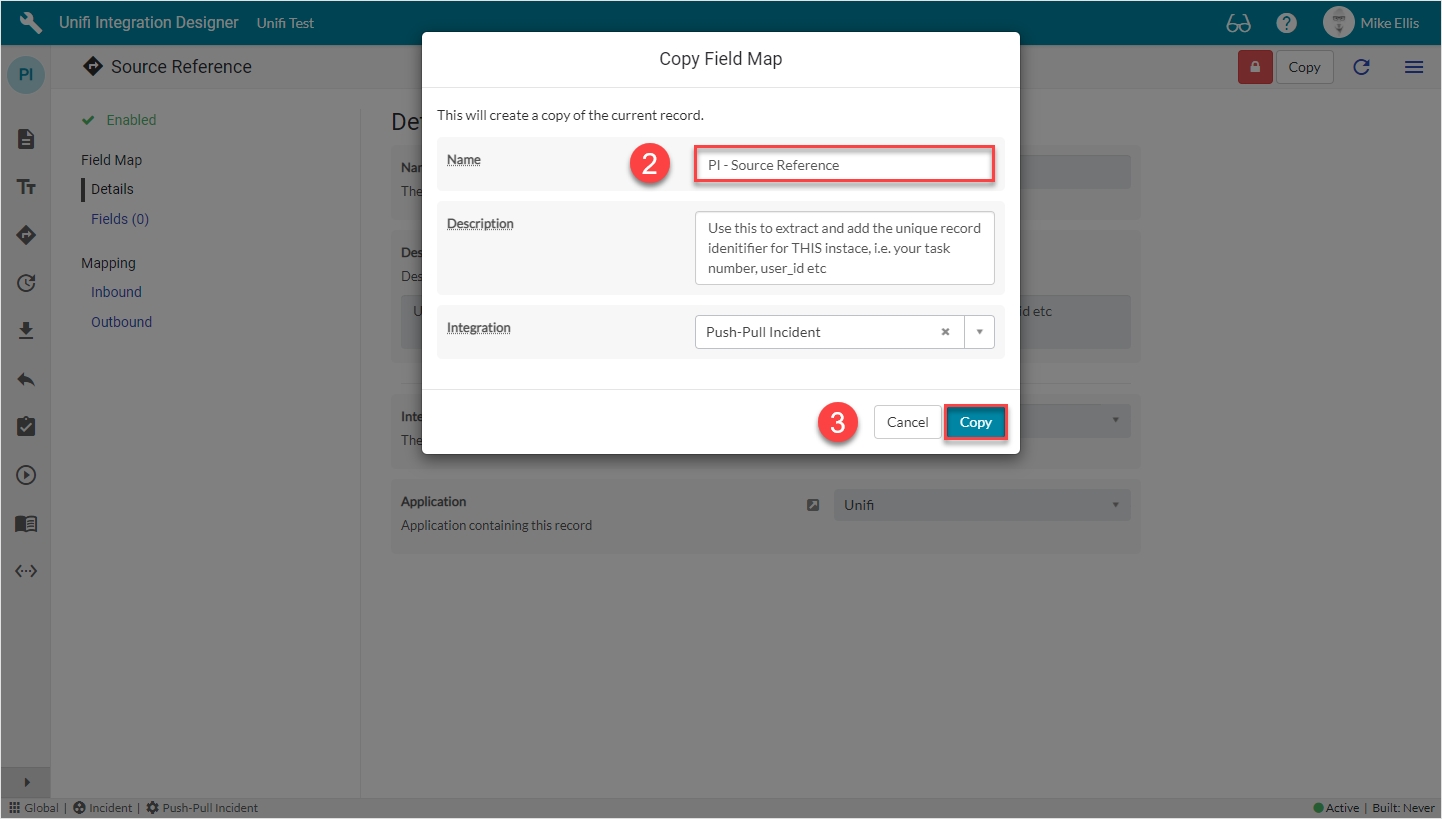
Click Copy.
You will be redirected to the Details page of the newly created Field Map.
Field: result.sys_id
In Unifi Integration Designer, from the CreateIncidentResponse page, navigate to Message > Fields. Click New.
The fields to be configured for the sys_id New Field modal are as follows:
Message*
The Message this Field record is linked with.
'CreateIncidentResponse'
Description
Describe what this field is for and any specific details that might help you in future.
'Extract returned sys_id & store in stage.external_reference'
Active*
Set to true to use this Field record for processing.
<true>
Field map
The Field Map this Field record is linked with.
'PI - Source Reference'**
Map to field*
Use this Field record to represent a field on a source/target table.
<false>
Path
Where in the payload the data will be placed.
'result'
Property
The property in the payload the data will be written to.
'sys_id'
Inbound*
Set to true to use for inbound Messages.
<true>
Outbound
Set to true to use for outbound Messages.
<false>
*These fields are automatically defaulted to true, or automatically populated.
**Field map: Value may vary. Choose the copy Field Map you created for your Integration.
The 'result.sys_id' New Field modal should look like this:
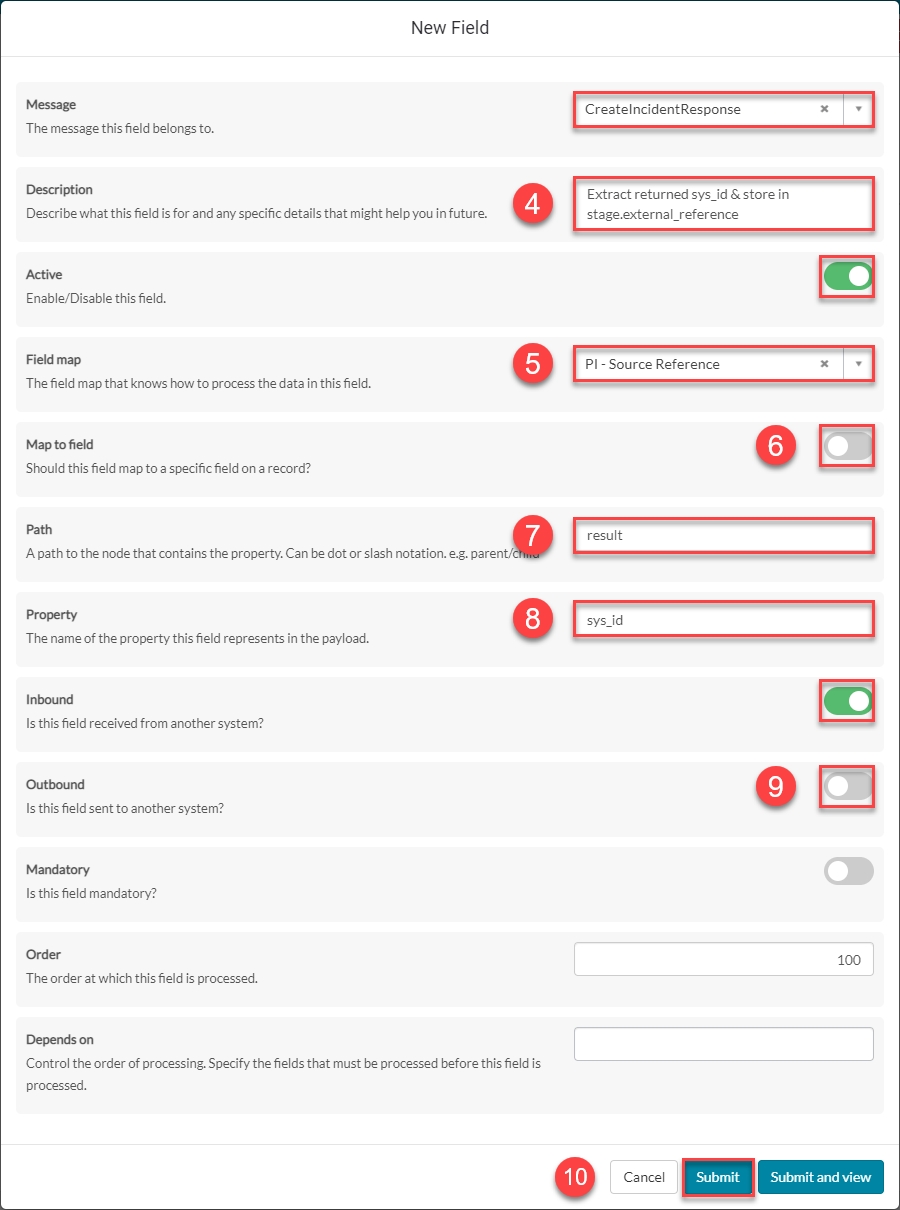
Submit the record.
You will be redirected back to the Fields page of the CreateIncidentResponse Message.
Build
Now that we’ve configured the Field records for the CreateIncidentResponse message, we are ready to build our message scripts.
The following Field record should now be in place for your CreateIncidentResponse messsage:
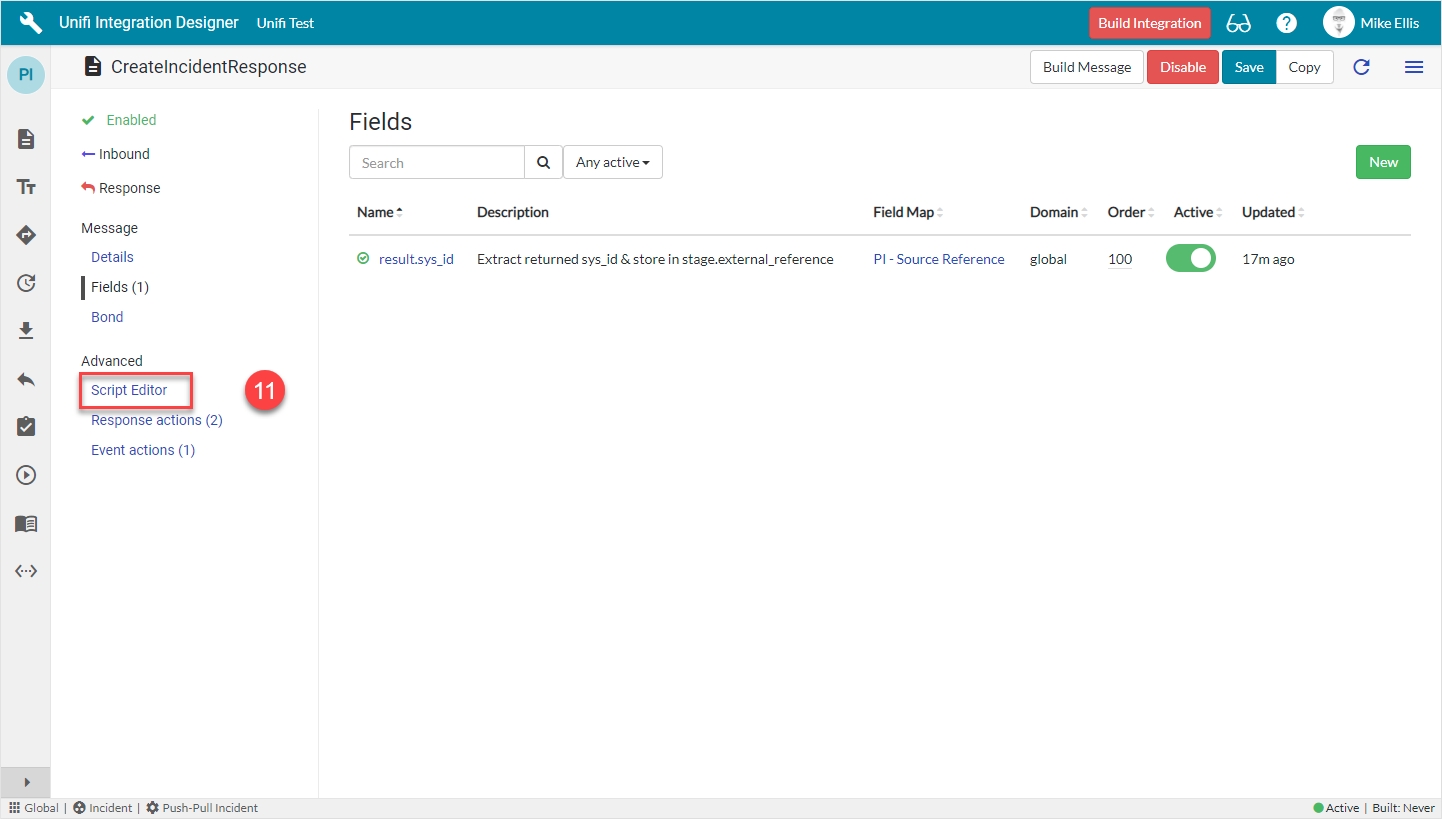
Feature Alert: In the picture above you will notice that a 'Build Integration' button has appeared in the banner at the top of the page. Whenever a change is made to a Field record that is associated to a Message (whether that is being created, updated, or deleted) the button will be available and acts as a visual reminder that changes have been made and Message Script(s) need to be built. We will talk more about this feature in the Build Integration Level page.
Navigate to Advanced > Script Editor.
When you first open the Script Editor, you will see the following:
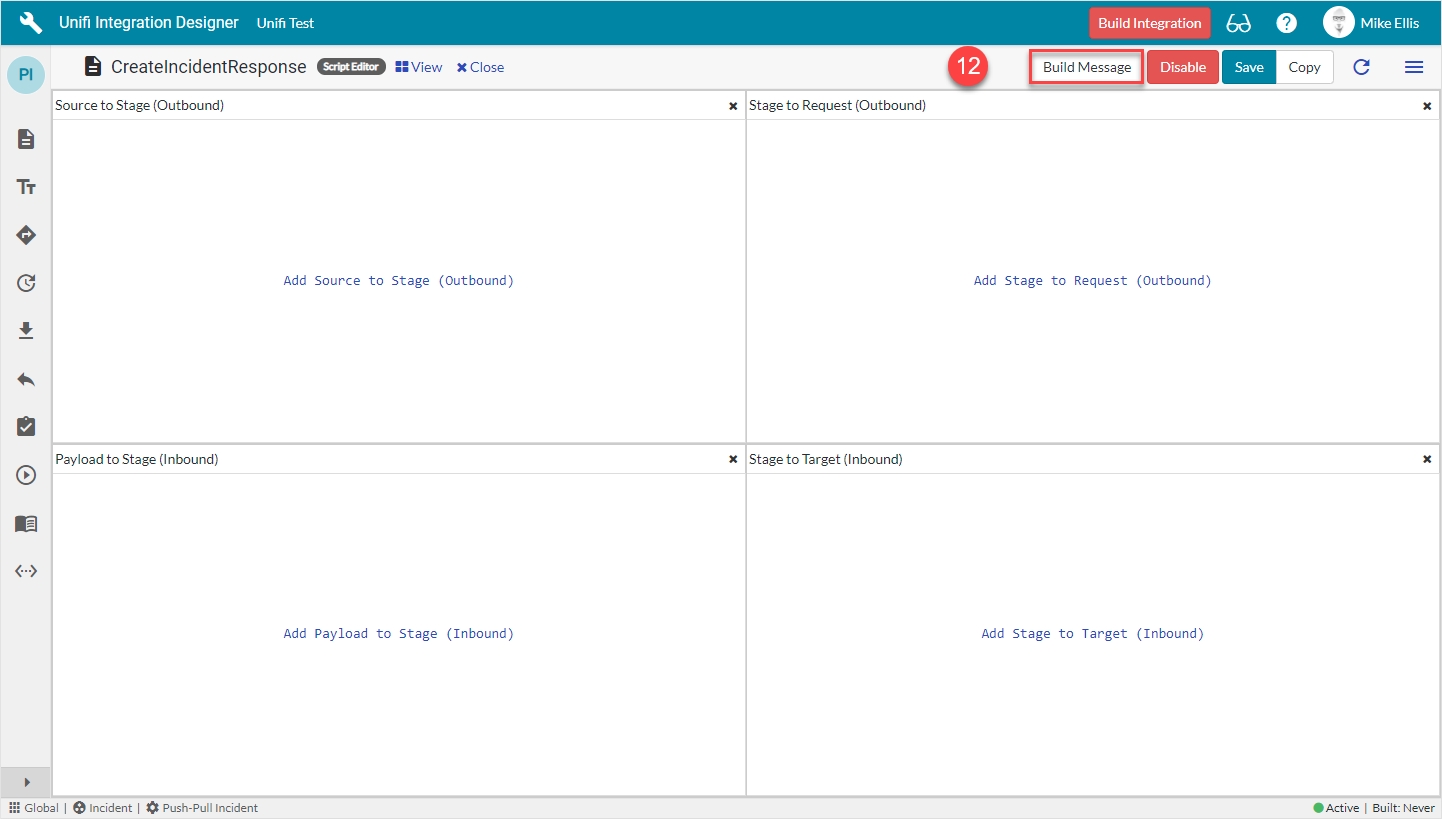
Having visibility of your message scripts in the one pane makes scripting so much more efficient.
Click on Build Message.
You will see the 'Message build successful' Info Message.

Your Script Editor fields should now look like this:

You can click View to adjust the layout and change the view to show various combinations of, or individual script fields.
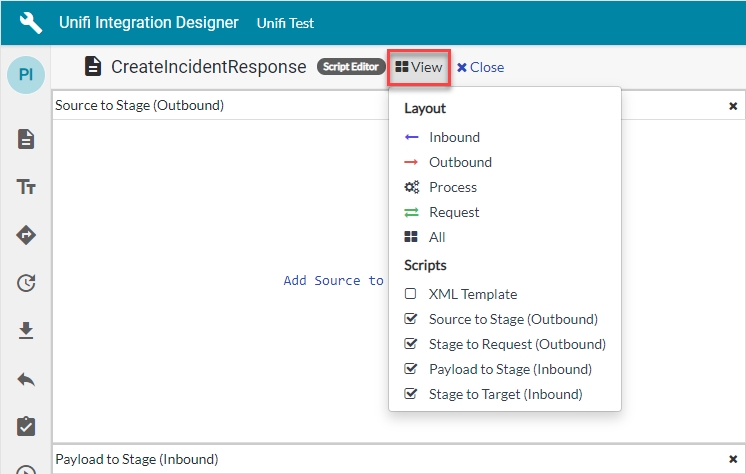
Message Scripts
We will now examine our new, auto-generated Message Script.
Payload to Stage:
Once you have finished examining the code, click 'Close' to navigate back to the Fields page of the CreateIncidentResponse Message.

Next, we will configure the CreateIncident Message.
Was this helpful?
